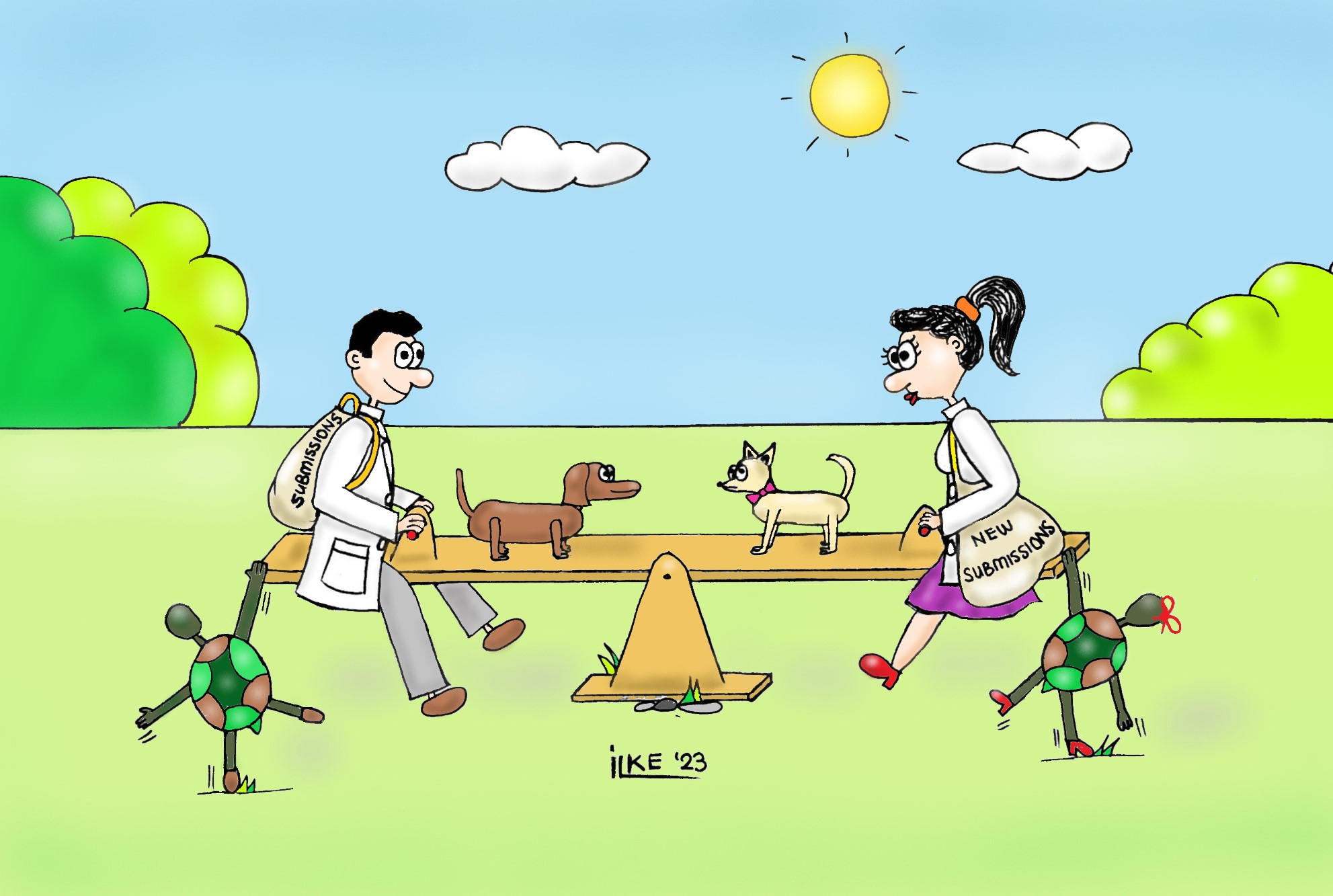Gender inequity has plagued scientific editing and publishing from the beginning, but there are signs of slow improvement. Over time, the percentage of women serving in leadership positions at scientific journals has increased.1 However, there is still underrepresentation of women in the field of publishing as authors, editors, and reviewers.2
In terms of authorship, the inequity is apparent, particularly in last authorships and in fields such as science, engineering, technology, and mathematics.2 In terms of editorship, the issue is more apparent in editor-in-chief (EIC) positions. Gollins et al.1 analyzed previous and current EICs of 25 dermatology journals. The results revealed that less than 19% of EICs were female, and moreover, 45.8% of journals had never had a female EIC, either. With regard to the journals that had a female EIC (n = 13), it was only after the year 2000 that 61.5% selected their first female EIC.1 A recent study by Liu et al.3 evaluated the gender of editors from more than 10,000 journals and 15 disciplines over 5 decades. Percentages of women among editors and EICs were 14% and 8%, respectively.3 Lin and Li4 analyzed 68 top psychology journals in 10 subdisciplines and found that the percentage of female editorship differed across subdisciplines, scholarships, and geographic regions. The ratio of female editorship was lower in method journals when compared to empirical and review journals and higher in North America than in Europe.4 Wang et al.5 further identified that journal impact factor did not have a significant effect on gender representation in editorial boards.
Gender inequity on editorial boards has inevitable consequences in terms of scholarly publishing. For instance, underrepresentation of female editors may lead to a consideration that the journal is not open to all authors, which may eventually discourage women from participation in science.3 Besides, female scientists would miss out on the benefits of editorial board membership (e.g., opportunities for intellectual growth and networking), which may in turn interfere with their career development.6
There is now an effort to ensure diversity in workplaces and teams, but this requires a systematic change. Every individual should be considered in an equal manner while making policy changes and giving promotions.7 Monitoring gender diversity in editorial boards, providing a vision, and setting a plan can pave the way for a change in gender diversity in science editing.8 Targeting gender balance in the academic arena would be of benefit. As an example, a cross-sectional study based on data from European League Against Rheumatism scientific member societies in 13 countries showed that there were gender differences in career progression in academic rheumatology. The number of women in academic rheumatology was lower than that in clinical rheumatology. Moreover, women tended to be under-represented in senior roles in academia. Therefore, inducing gender-equitable career advancement in the academic arena is of utmost importance.9 Some countries have founded women associations in rheumatology. The aim of these associations is to support the education and advancement of women in the field of rheumatology.10 Inequity can be reduced, and identifying the potential causes of gender imbalance is a crucial step to address the barriers that result in inequities and to move forward in science.11
References and Links
- Gollins CE, Shipman AR, Murrell DF. A study of the number of female editors-in-chief of dermatology journals. Int J Womens Dermatol. 2017;3:185–188. https://doi.org/10.1016/j.ijwd.2017.03.001
- Pihno-Gomes A-C, Woodward M. How long are we going to accept stark gender imbalances across the publishing system? Sci Ed. 2022;45:114–117. https://doi.org/10.36591/SE-D-4504-01
- Liu F, Holme P, Chiesa M, AlShebli B, Rahwan T. Gender inequality and self-publication are common among academic editors. Nat Hum Behav. 2023;7:353–364. https://doi.org/10.1038/s41562-022-01498-1
- Lin Z, Li N. Contextualizing gender disparity in editorship in psychological science. Perspect Psychol Sci. 2022;18:887–907. https://doi.org/10.1177/17456916221117159
- Wang A, Dunlop R, Allavena R, Palmieri C. Gender representation on journal editorial boards in the field of veterinary sciences. Res Vet Sci. 2022;148:21–26. https://doi.org/10.1016/j.rvsc.2022.05.001
- Fox CW, Duffy MA, Fairbairn DJ, Meyer JA. Gender diversity of editorial boards and gender differences in the peer review process at six journals of ecology and evolution. Ecol Evol. 2019;9:13636–13649. https://doi.org/10.1002/ece3.5794
- Sorenson MS. Diversity in the publishing workplace—what can we do to make systematic changes at the top? Sci Ed. 2023;46:24–26. https://doi.org/10.36591/SE-D-4601-10
- Metz I, Harzing A. An update of gender diversity in editorial boards: a longitudinal study of management journals. Personnel Rev. 2012;41:283–300. https://doi.org/10.1108/00483481211212940
- Ovseiko PV, Gossec L, Andreoli L, Kiltz U, van Mens L, Hassan N, van der Leeden M, Siddle HJ, Alunno A, McInnes IB, et al. Gender equity in academic rheumatology, current status and potential for improvement: a cross-sectional study to inform an EULAR task force. RMD Open. 2022;8:e002518. https://doi.org/10.1136/rmdopen-2022-002518
- Piantoni S, Sakellariou G. Editorial: women in science—rheumatology 2021. Front Med (Lausanne). 2022;9:1016388. https://doi.org/10.3389/fmed.2022.1016388
- Mahmood SN, Blanco I. The road to equity for women in academic rheumatology. Nat Rev Rheumatol. 2020;16:669–670. https://doi.org/10.1038/s41584-020-00517-7
Ilke Coskun Benlidayi, MD (http://orcid.org/0000-0001-6517-5969), Associate Professor, Cukurova University Faculty of Medicine, Department of Physical Medicine and Rehabilitation, Adana-Türkiye.
Opinions expressed are those of the authors and do not necessarily reflect the opinions or policies of the Council of Science Editors or the Editorial Board of Science Editor.

